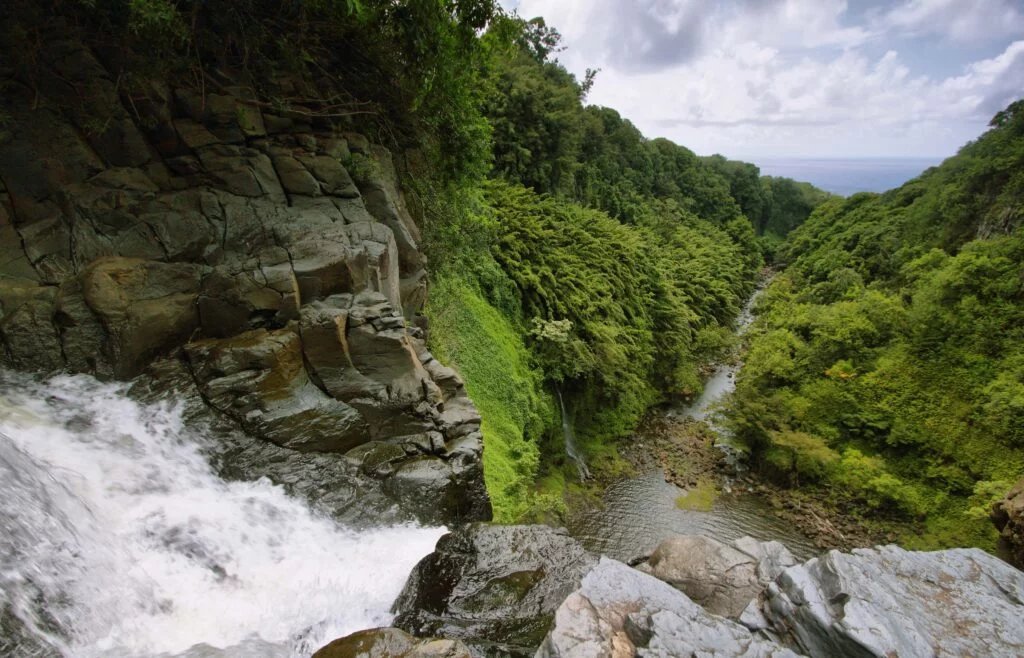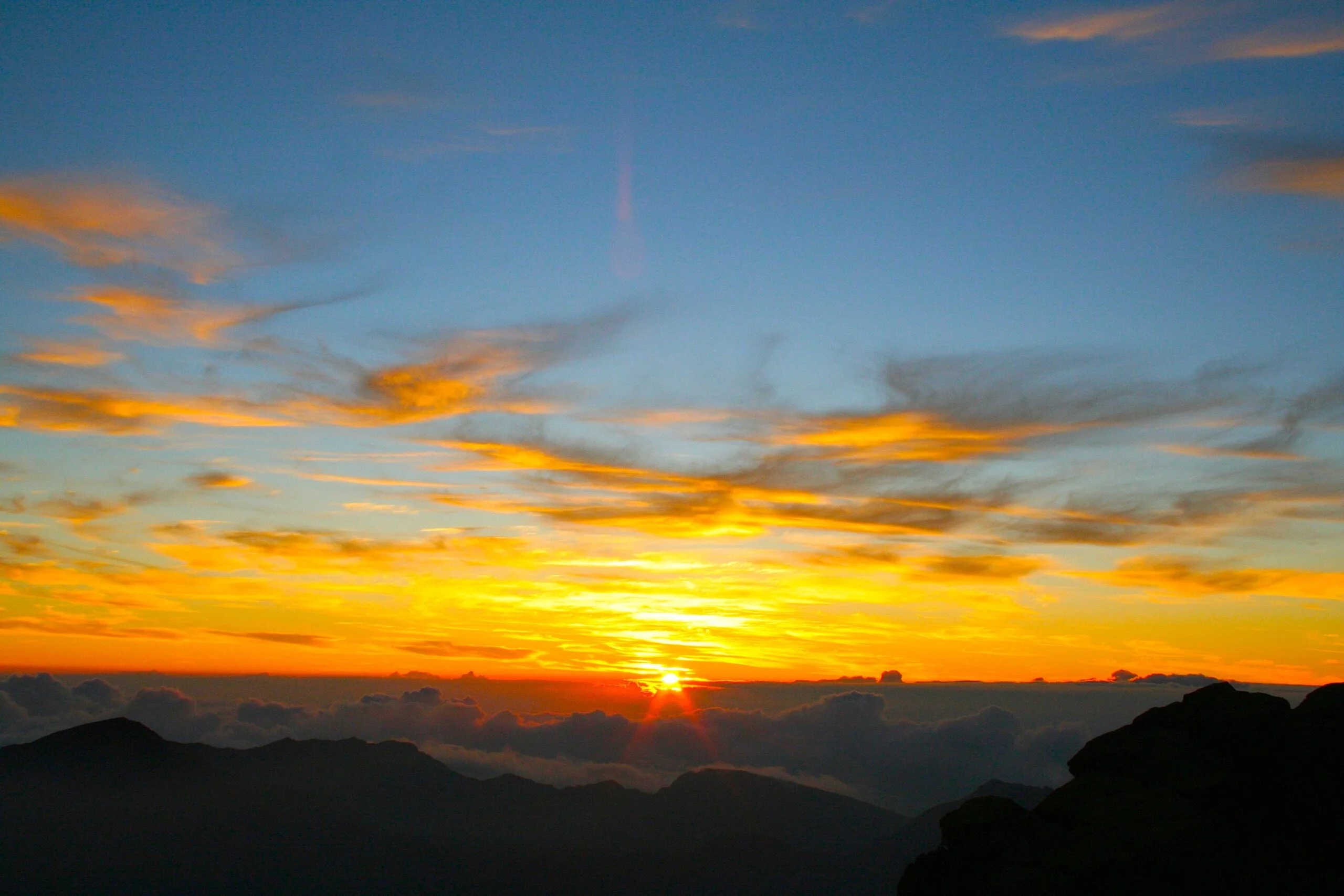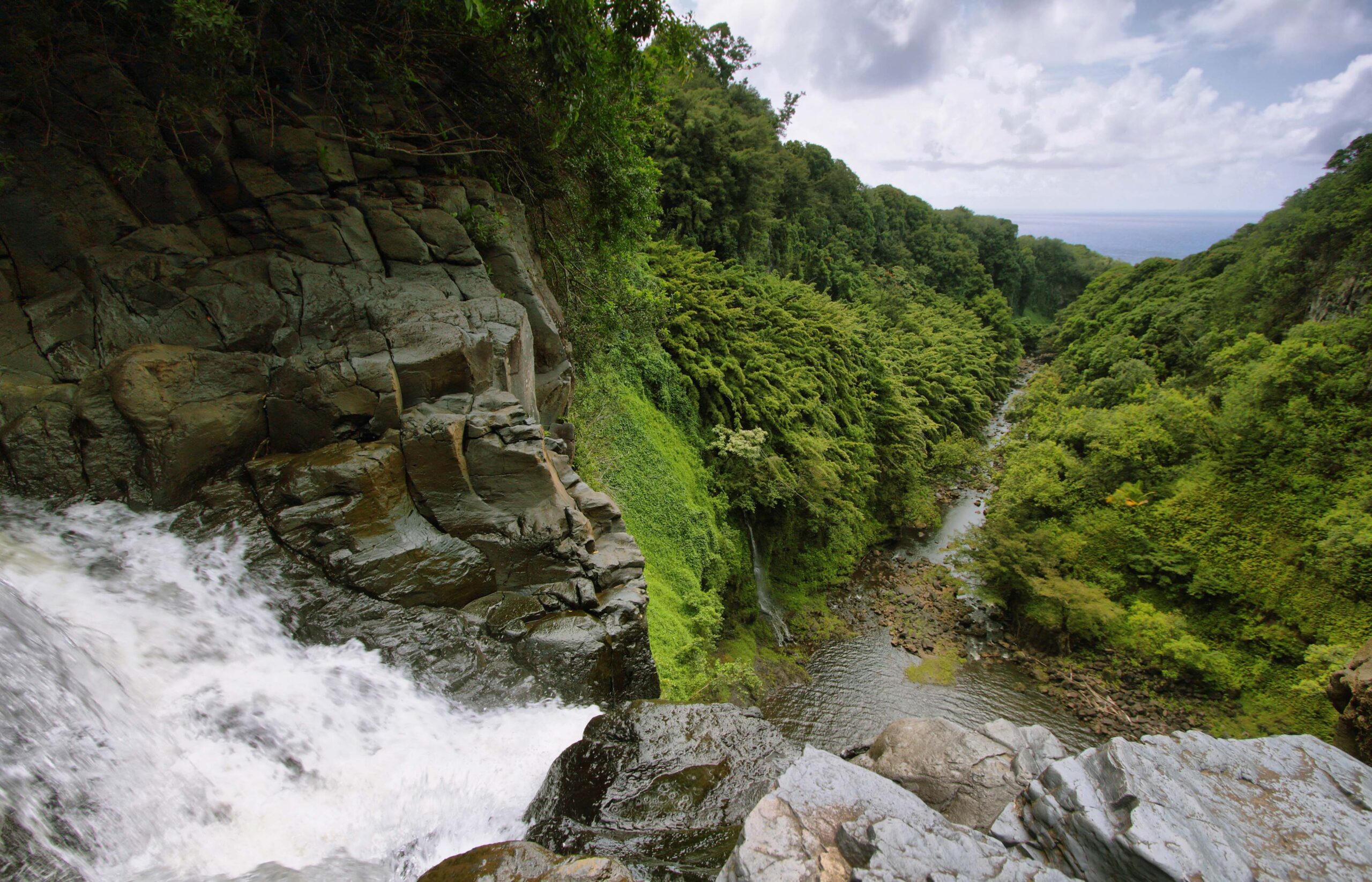Cultural Uses of Haleakalā

The House of the Sun
 The demi-god Maui, a mythical hero and trickster, is credited with creating the Hawaiian islands by pulling them up from the ocean floor with his magic fish hook. The name Haleakalā means “House of the Sun” in Hawaiian. It is derived from another of Maui’s legendary exploits. According to one version of the story, Maui’s mother complained that she couldn’t dry her kapa (traditional pounded bark) cloth because the days were too short. So, Maui fashioned a rope of coconut, and from the crater at the mountain’s summit he lassoed the sun’s rays as it rose one morning. He restrained the sun until it promised to make the days longer in the summer. The Kipahulu District
The demi-god Maui, a mythical hero and trickster, is credited with creating the Hawaiian islands by pulling them up from the ocean floor with his magic fish hook. The name Haleakalā means “House of the Sun” in Hawaiian. It is derived from another of Maui’s legendary exploits. According to one version of the story, Maui’s mother complained that she couldn’t dry her kapa (traditional pounded bark) cloth because the days were too short. So, Maui fashioned a rope of coconut, and from the crater at the mountain’s summit he lassoed the sun’s rays as it rose one morning. He restrained the sun until it promised to make the days longer in the summer. The Kipahulu District  At the base of Haleakalā along the coastal slopes lies Kipahulu, a once thriving ancient settlement area prized for its fertile land and fisheries, and its religious sites. Like the mountain, Kipahulu appears in several native Hawaiian legends, and is believed to be the home of the god of canoe builders. Today the Kipahulu is best known for its lush hiking areas and the Pools of`Oheo, a series of freshwater ponds fed by cascading waterfalls. In recent decades native Hawaiians have kept traditional culture in the area alive by reviving ancient practices in agriculture, forestry, crafts and dwelling construction. A Sacred Space The Haleakalā National Park is a sacred space for native Hawaiians, who visit the mountain to perform ancient rituals, including burial of the dead. Many areas within the park are reserved and protected for native Hawaiian ritual use. Tourists are encouraged to respect mountain’s spiritual significance and participate in that tradition by joining in chants that greet the spectacular sunrise vista at the summit. About the Author: Skyline Hawai’i is committed to the preservation of Hawaii’s landscape and culture, and we want as many people as possible to experience the natural wonder of the Hawaiian Islands. Learn more about our conservation efforts: www.skylinehawaii.com.
At the base of Haleakalā along the coastal slopes lies Kipahulu, a once thriving ancient settlement area prized for its fertile land and fisheries, and its religious sites. Like the mountain, Kipahulu appears in several native Hawaiian legends, and is believed to be the home of the god of canoe builders. Today the Kipahulu is best known for its lush hiking areas and the Pools of`Oheo, a series of freshwater ponds fed by cascading waterfalls. In recent decades native Hawaiians have kept traditional culture in the area alive by reviving ancient practices in agriculture, forestry, crafts and dwelling construction. A Sacred Space The Haleakalā National Park is a sacred space for native Hawaiians, who visit the mountain to perform ancient rituals, including burial of the dead. Many areas within the park are reserved and protected for native Hawaiian ritual use. Tourists are encouraged to respect mountain’s spiritual significance and participate in that tradition by joining in chants that greet the spectacular sunrise vista at the summit. About the Author: Skyline Hawai’i is committed to the preservation of Hawaii’s landscape and culture, and we want as many people as possible to experience the natural wonder of the Hawaiian Islands. Learn more about our conservation efforts: www.skylinehawaii.com. 